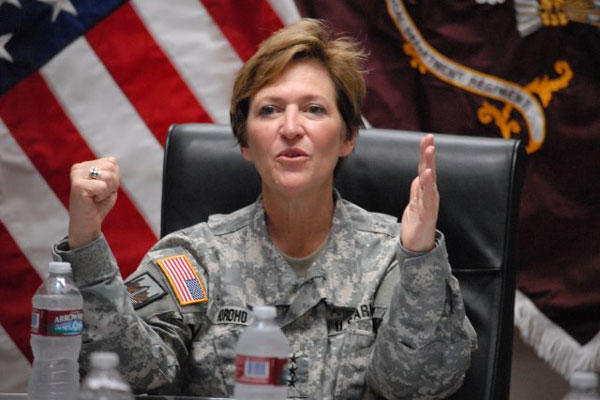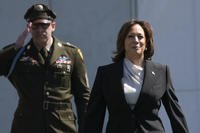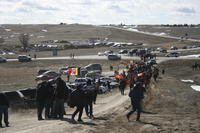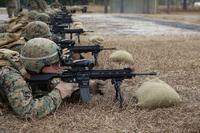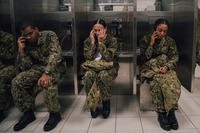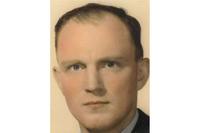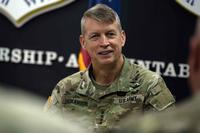The Pentagon's press secretary said Monday that he was looking into allegations that Army Surgeon Lt. Gen. Patricia Horoho sought to delay a Freedom of Information Act request for concussion data and manipulate reporters to cover up potential wrongdoing.
At a confrontational news briefing, Pentagon Press Secretary Peter Cook told reporters, "I hear your concerns about this particular incident." He said, "We treat the FOIA process here, as with other government agencies, as incredibly important."
Cook said he was not yet fully informed on the details of the allegations that Horoho and the West Point Superintendent, Lt. Gen. Robert L. Caslen Jr., conspired to delay a FOIA request from The New York Times on concussions in the Academy's mandatory boxing program.
The Times also published an internal Army document that purported to show Horoho and Caslen planned to quash the Times story before it was published by planting favorable articles with other news outlets.
Caslen earlier this month took responsibility for an Aug. 20 pillow fight at the academy in which 30 cadets required treatment for mild concussions, bloody noses, split lips and other injuries. The final injury toll was 24 concussions, a broken nose, a dislocated shoulder, a hairline fracture of a cheekbone and possibly a broken leg. All of the injured returned to duty.
Because the incident that started out as a morale builder turned bloody, a military police investigation was ongoing, Caslen said at the time. "I assure you that the chain of command will take appropriate action when the investigation is complete," he said.
At the Pentagon on Tuesday, Cook vowed to "get up to speed on this particular issue" and added that FOIA requests "should be treated appropriately under the law by this institution and others in government as well."
On the issue of shopping favorable stories to news outlets to offset bad news, Cook said, "I don't know all the details about this. It would be inappropriate for me to weigh in."
The Times' story Tuesday said that Horoho and Caslen "discussed trying to kill an article in The New York Times on concussions at West Point by withholding information so the Army could encourage competing news organizations to publish a more favorable story."
The Times said that an internal Army document showed Horoho telling Caslen to delay the FOIA request while she tried to plant a favorable story on how the Army dealt with concussions with The Wall Street Journal and USA Today.
"I recommend you let us publish this article BEFORE you release the FOIA to the NYT reporter," Horoho was quoted as saying in the Army document.
Horoho also appeared to brag that she had "killed" a negative news story on the Warrior Transition Units last year at Fort Carson, Colorado. She said a roundtable session with reporters at the Pentagon, including one from Military.com, headed off a story by the Colorado Gazette and others.
However, Horoho's performance at the roundtable was riddled with errors and misstatements. The Army later had to put out lengthy corrections of what she had said.
The roundtable also led Military.com and others to seek copies of an Article 15-6 fact-finding investigation by Army Brig. Gen. John Sullivan, who concluded that there was a "toxic environment" at Fort Carson in the treatment of wounded warriors.
--Richard Sisk can be reached at Richard.Sisk@military.com.
